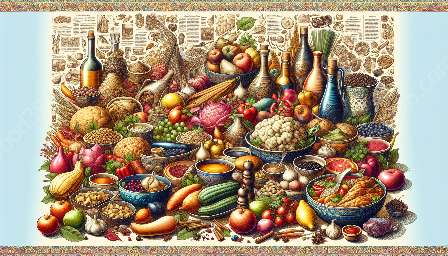Early agricultural practices in Mesopotamia played a crucial role in shaping the development of food cultures and the origin and evolution of food culture. This article explores how the earliest agricultural practices in Mesopotamia laid the foundation for a rich and diverse food culture.
Introduction to Mesopotamian Agriculture
Mesopotamia, often referred to as the cradle of civilization, is one of the earliest known human civilizations. The fertile land between the Tigris and Euphrates rivers enabled the early inhabitants of Mesopotamia to develop sophisticated agricultural practices.
Domestication of Plants and Animals
One of the earliest agricultural practices in Mesopotamia was the domestication of plants and animals. Early Mesopotamian farmers domesticated a variety of crops, including barley, wheat, and lentils, as well as animals such as cattle, sheep, and goats. This marked the beginning of organized agriculture in the region.
Irrigation Systems
To maximize agricultural productivity, Mesopotamian farmers developed advanced irrigation systems. They constructed canals and ditches to divert water from the rivers to their fields, allowing for year-round cultivation and increased crop yields. The development of efficient irrigation systems was a significant advancement in early Mesopotamian agriculture.
Use of Plows and Tools
Mesopotamian farmers also utilized plows and tools to cultivate their fields. The invention of the plow revolutionized agriculture by enabling farmers to till the soil more effectively, leading to improved crop production. These tools were essential in the early agricultural practices of Mesopotamia.
Surplus Food Production
The adoption of advanced agricultural techniques led to surplus food production in Mesopotamia. This surplus allowed for the growth of urban centers and the development of a complex food culture. The abundance of food contributed to the richness and diversity of Mesopotamian cuisine.
Impact on Food Culture
The earliest agricultural practices in Mesopotamia had a profound impact on the development of food cultures. The abundance of crops and livestock facilitated the creation of diverse culinary traditions, with various ingredients and cooking methods becoming integral to Mesopotamian cuisine. The early agricultural practices laid the groundwork for a vibrant and evolving food culture in the region.
Origin and Evolution of Food Culture
The origin and evolution of food culture in Mesopotamia can be traced back to the innovative agricultural practices of the early inhabitants. The cultivation of staple crops, the domestication of animals, and the development of irrigation systems were pivotal in shaping the food culture of Mesopotamia. The agricultural innovations not only sustained the population but also contributed to the emergence of unique culinary traditions.
Conclusion
The earliest agricultural practices in Mesopotamia were fundamental in laying the foundation for the development of food cultures and the origin and evolution of food culture. The domestication of plants and animals, the implementation of advanced irrigation systems, and the use of tools all played a vital role in shaping the rich and diverse food culture of Mesopotamia.


